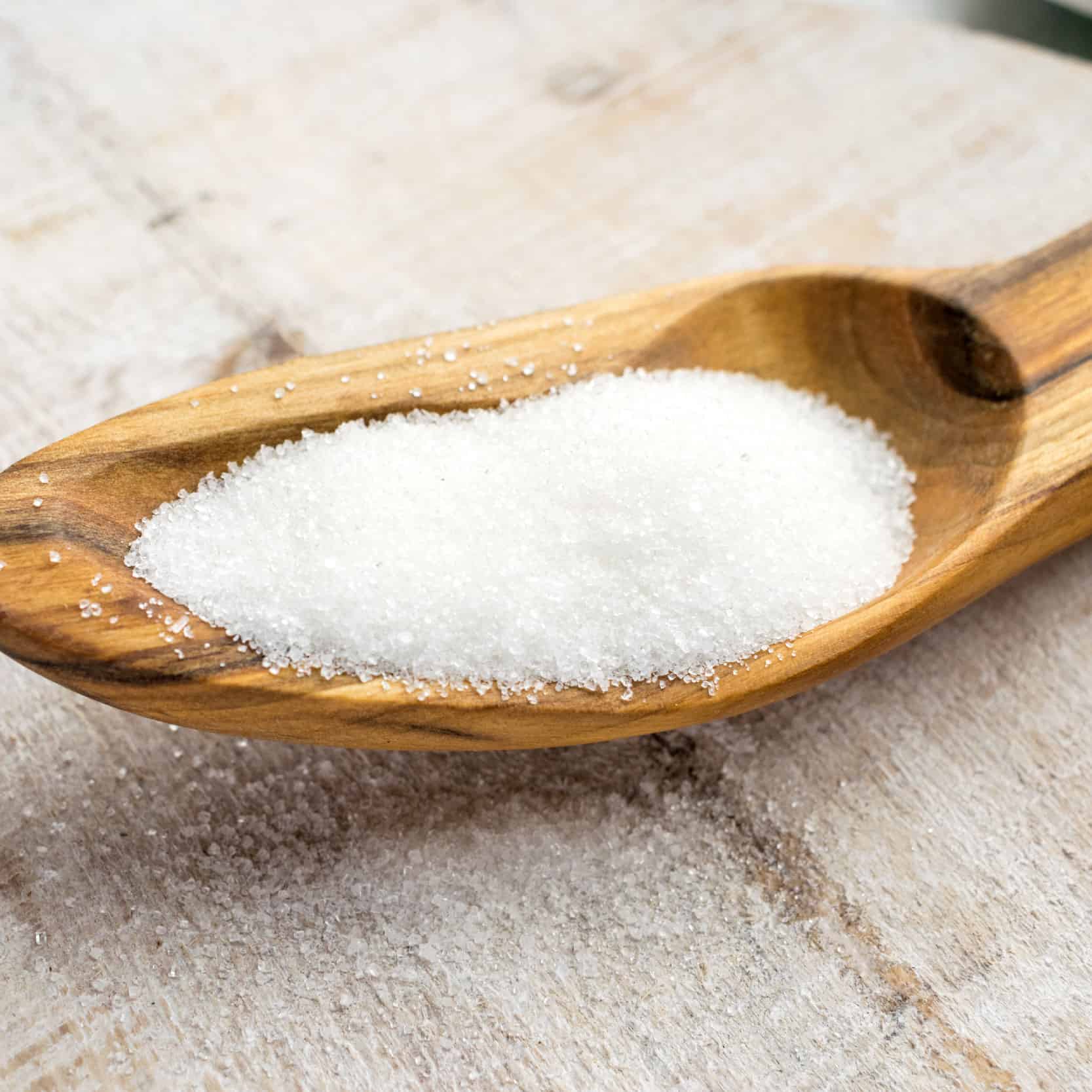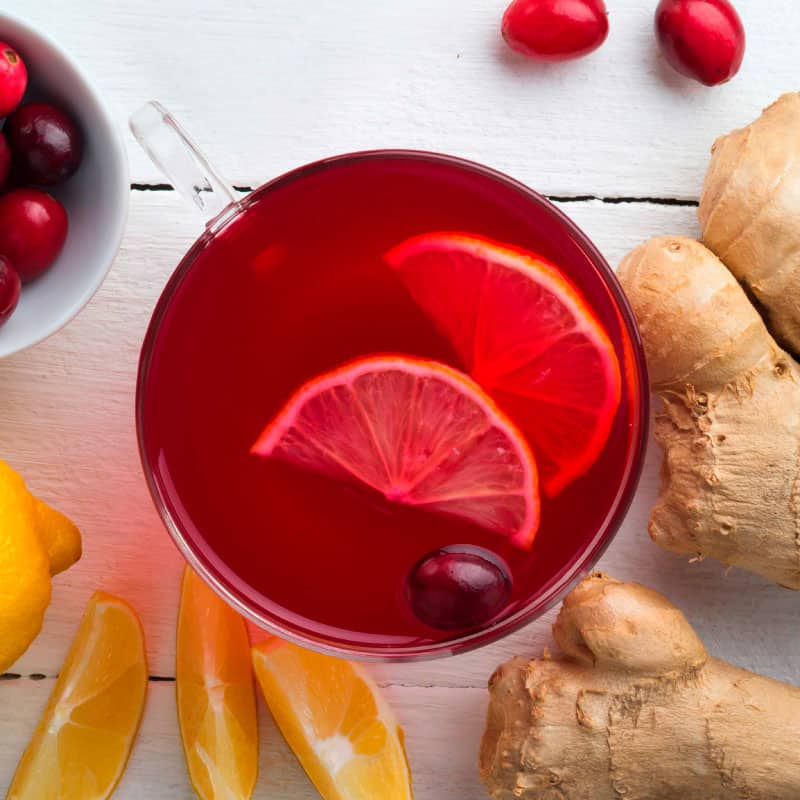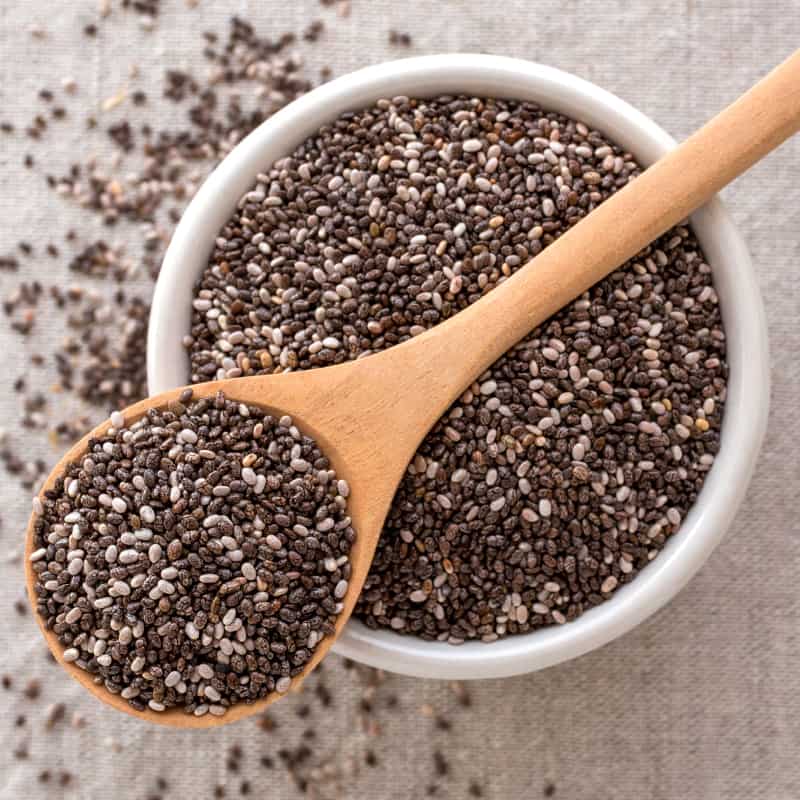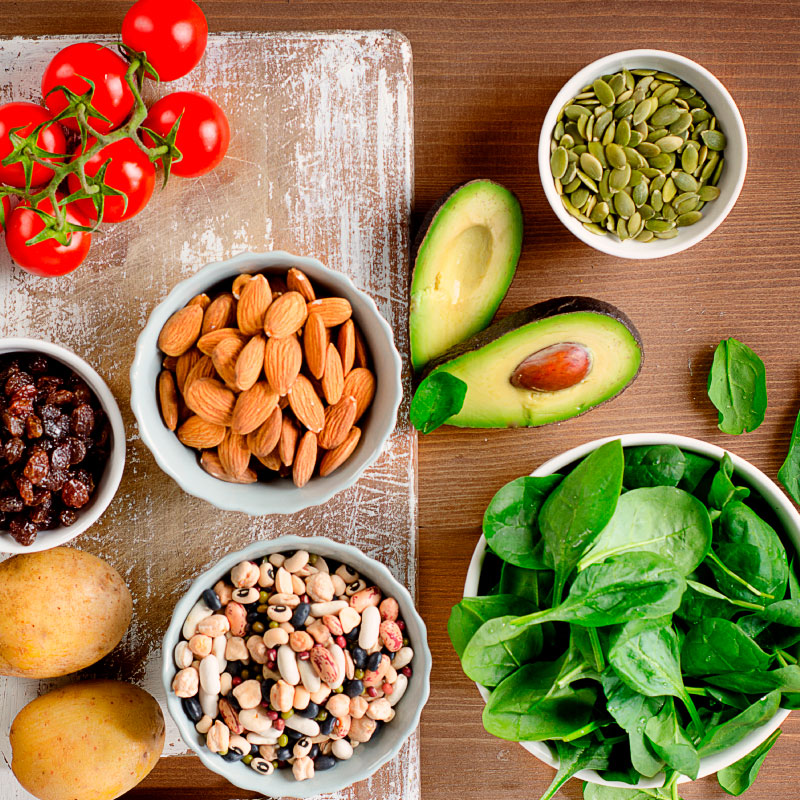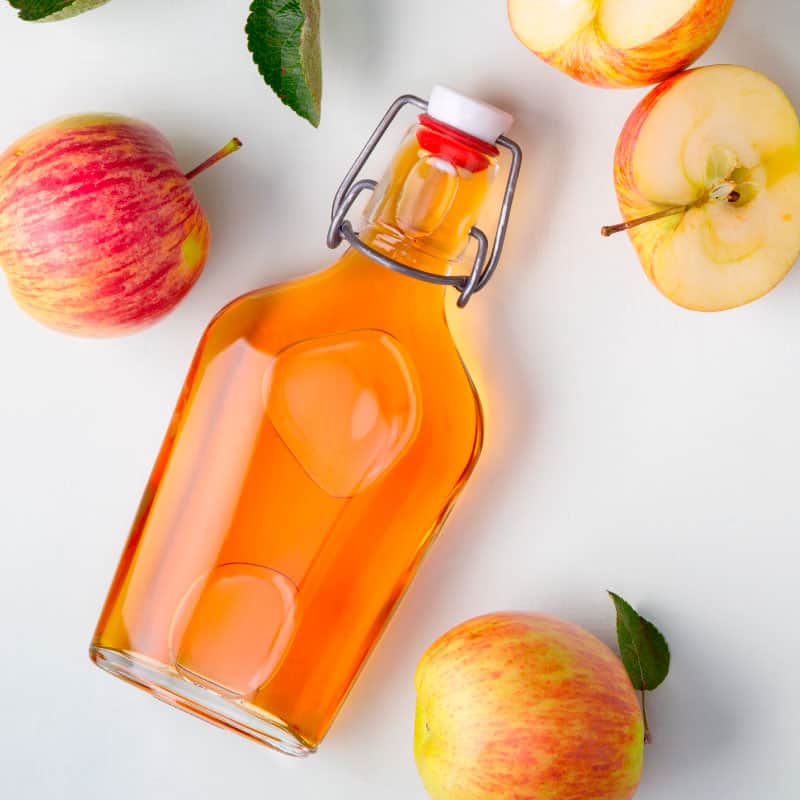This Dr. Axe content is medically reviewed or fact checked to ensure factually accurate information.
With strict editorial sourcing guidelines, we only link to academic research institutions, reputable media sites and, when research is available, medically peer-reviewed studies. Note that the numbers in parentheses (1, 2, etc.) are clickable links to these studies.
The information in our articles is NOT intended to replace a one-on-one relationship with a qualified health care professional and is not intended as medical advice.
This article is based on scientific evidence, written by experts and fact checked by our trained editorial staff. Note that the numbers in parentheses (1, 2, etc.) are clickable links to medically peer-reviewed studies.
Our team includes licensed nutritionists and dietitians, certified health education specialists, as well as certified strength and conditioning specialists, personal trainers and corrective exercise specialists. Our team aims to be not only thorough with its research, but also objective and unbiased.
The information in our articles is NOT intended to replace a one-on-one relationship with a qualified health care professional and is not intended as medical advice.
Gluten-Free Grains Your Digestive System Will Love
September 24, 2018
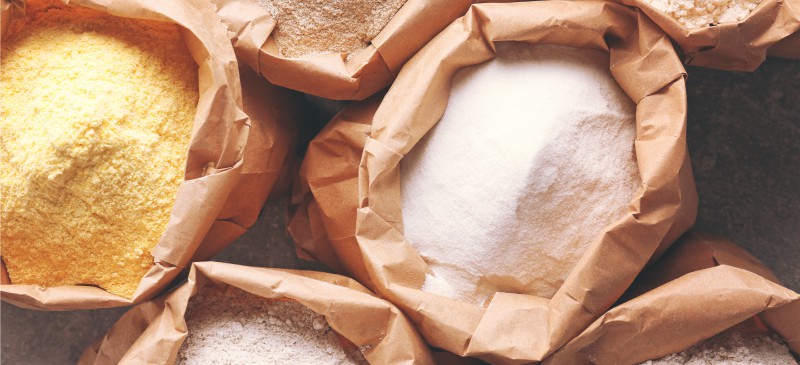
Gluten-free has become so popular on shelves today that practically every company out there touts a gluten-free product in one shape or form. While gluten-free does not mean healthy, often buzzwords like this are used to really push products, and that brings us to why it’s so important to really know if those “gluten-free grains” you’re buying are actually sans gluten and a healthy option otherwise.
What is gluten? According to the Whole Grains Council, gluten is a protein found in wheat — such as spelt, kamut, einkorn, farro/emmer, barley, rye and triticale — that’s hard for some people to digest. It helps bind and shape foods by creating elasticity. About 1 percent to 2 percent of the population has celiac disease, which is an autoimmune form of gluten intolerance. These folks have quite a struggle and must eat a gluten-free diet for life. There are others who don’t have celiac disease but could have allergies relating to the consumption of wheat. Experts tell us that about 1 percent to 6 percent of the population falls into this category. (1, 2)
Thus, if you have some sort of intolerance to gluten, it’s best to replace any whole wheat with gluten-free grains and follow at least a modified celiac disease diet. What are the best gluten-free grains out there, and how do they compare to the more common gluten-containing grains we were raised on? Let’s find out, along with ways to incorporate gluten-free grains and the benefits of a gluten-free diet.
Top 9 Gluten-Free Grains
There are more gluten-free grains than you probably would have guessed. Here are the top nine gluten-free grains I recommend, which also work as gluten-free flours. Most of these are fairly easy to find at your local grocer, and they’re versatile and diverse enough to replace wheat in just about any recipe.
- Amaranth: Amaranth offers digestive benefits and helps build healthy bones. It’s a great source of protein, fiber, manganese, magnesium, phosphorus and iron.
- Brown Rice: Can promote a healthy heart, provide manganese and decrease cholesterol.
- Buckwheat: Buckwheat is a nutrient-dense seed filled with antioxidants.
- Corn Grits (Polenta): Corn-based grains, like polenta, can be a great gluten-free source, but there is one key thing to consider: Is it non-GMO? Look for non-GMO versions and you will likely fare well due to the antioxidants and fiber they contain.
- Millet: Millet is also a seed often referred to as a grain. Yes, birds love this little seed, and you, too, may want to give it a shot. Its fiber content and low glycemic index help keep the body regulated while maintaining healthy blood sugar levels.
- Oats: Oats always seem to be in question as to whether they make the gluten-free list. So are oats gluten-free? The short version is, yes, oats are gluten-free, but they can be grown in the same fields as wheat products. That may be where a gluten sensitivity lies with oats, as the gluten remnants can find their way into oats. Purchase brands that label them as gluten-free. If needed, call the company to ask about how they’re produced.
- Quinoa: Quinoa has been very popular over the years due to its gluten-free status. Additionally, it contains protein, antioxidants, vitamins and minerals.
- Sorghum: Sorghum is typically found as a flour and does well with nutrient density, offering protein, iron, B vitamins and dietary fiber. It also contains inflammation-reducing antioxidants.
- Teff: You may not have heard of teff, but this gluten-free grain aids in circulation as well as weight loss.
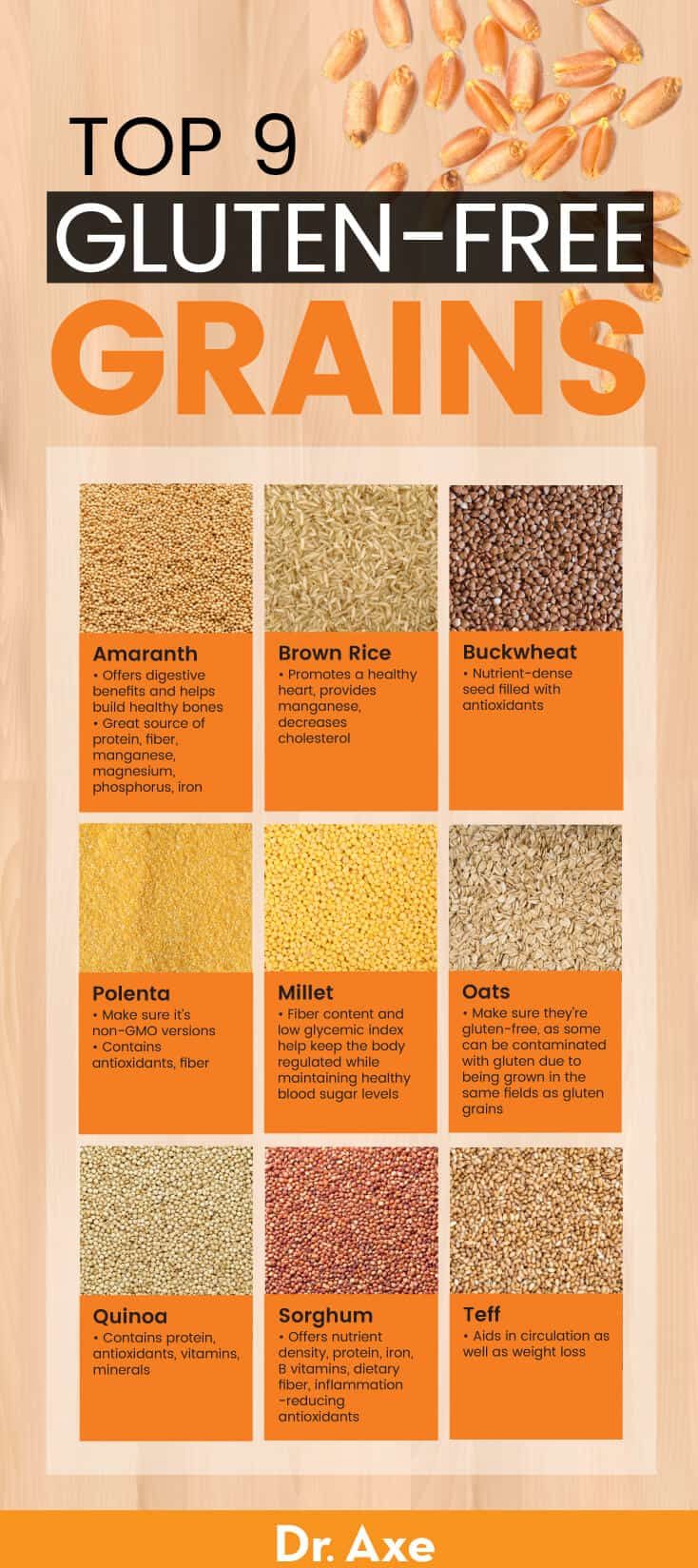
Top 3 Grains that Contain Gluten
Wheat is commonly found in:
- breads
- baked goods
- soups
- pasta
- cereals
- sauces
- salad dressings
- roux
Barley is commonly found in:
- malt (malted barley flour, malted milk and milkshakes, malt extract, malt syrup, malt flavoring, malt vinegar)
- food coloring
- soups
- beer
- brewer’s yeast
Rye is commonly found in:
- rye bread, such as pumpernickel
- rye beer
- cereals
Gluten-Free Grains vs. Grains with Gluten
So with all this gluten-free buzz that has been around for quite a while, what does our body need? It’s pretty clear that if you have celiac disease or a gluten intolerance, you have to steer clear of the sticky protein. However, for many gluten is simply a buzzword, and not having it could cause you to miss out on the benefits of many whole grains.
Some benefits include a lower risk of stroke, type 2 diabetes, heart disease, asthma, colorectal cancer, inflammatory diseases and gum disease, increased satiety, and healthier weight status. Whole grains, especially when produced properly and free of harsh chemicals, can offer vitamins and minerals, such as B6, E, niacin, pantothenic acid, riboflavin, thiamine, folate, calcium, iron, magnesium, zinc, copper, selenium and potassium, fiber, protein, antioxidants, health-protective phytonutrients and healthy fats. If you don’t have problems digesting gluten, then you probably have no need to avoid it.
Regardless, the Chicago Tribune reports that there are ways to consume healthy gluten-free grains, but some gluten-free grains actually don’t provide much nutritional value. Shelley Case, R.D., a dietitian, gluten-free diet expert and author of “Gluten-Free Diet: A Comprehensive Resource Guide,” notes that many gluten-free foods are made from refined grains and starches, such as white rice flour, corn starch, potato starch or tapioca starch, that offer little in the nutrition department. Case — along with the USDA and the Whole Grains Council — advises that those who regularly eat whole grains have lower disease rates. (4)
So, if you’re going to go gluten-free, opt for gluten-free grains that offer more nutrition than the ones mentioned by Case.
Related: Fonio: The Ancient Super Grain & How It Compares to Quinoa
Benefits of a Gluten-Free Diet
1. Helps Reduce Symptoms Relating to IBS
It’s probably no surprise that food plays a role in irritable bowel syndrome (IBS). IBS is a disorder relating to the intestines that affects 7 percent to 20 percent of the adult population in the United States. It’s often defined by recurrent abdominal pain or discomfort, diarrhea, and/or constipation.
Gluten has become a suspected contributor to this problem for some time now. While some patients may have celiac or food allergies, studies have shown that simply eliminating gluten from the diet may solve an IBS problem. Often, patients are asked to take on a low FODMAP diet, and gluten-free is a characteristic of this type of diet to treat IBS. (5)
2. May Help Children with Autism
This may seem like a stretch for some, and according to Harvard and the Journal of Autism and Developmental Disorders, gluten has nothing to do with it. However, it seems that the debate still exists. (6)
Many parents and even hospitals, specifically the Children’s Hospitals and Clinic of Minnesota, feel strongly that a gluten-free diet makes a difference in behavior, social interaction and learning in children with autism. Apparently, more studies are needed, but reports suggest that a gluten-free diet combined with a casein-free diet has proved to be beneficial in autistic children. (7, 8)
3. Can Give You Energy
It’s been reported that gluten causes a tired and lethargic feeling in many individuals. In those who are sensitive people, it can prevent the proper absorption of nutrients, which in turn prevents the brain, nervous system and organs from getting the proper nourishment needed. This lack of nourishment can have a direct result of feeling tired. If you’re sensitive to gluten, giving it up may revive your energy levels. (9)
4. Could Prevent Bloating
Bloating is one of the most common symptoms of gluten sensitivity that I hear from my patients. It’s usually defined as pressure on the abdomen but is also known as an expanded abdominal area and excessive gas. Bloating is often associated with functional gastrointestinal disorders, such as irritable bowel syndrome. Eliminating gluten from your diet could result in little to no bloating.
A study was conducted of 486 patients with suspected non-celiac gluten sensitivity over a one-year period. Symptoms noted were abdominal pain, bloating, diarrhea and/or constipation, nausea, epigastric pain, gastroesophageal reflux, aphthous stomatitis, tiredness, headache, fibromyalgia-like joint/muscle pain, leg or arm numbness, foggy brain, dermatitis or skin rash, depression, anxiety, and anemia.
In most patients, the time lapse between gluten ingestion and the appearance of symptoms varied. The most frequent associated disorders were irritable bowel syndrome (47 percent), food intolerance (35 percent) and IgE-mediated allergy (22 percent). An associated autoimmune disease was detected in 14 percent of cases. (10, 11)
By replacing gluten grains with gluten-free grains and otherwise following a gluten-free diet, digestive symptoms may decrease.
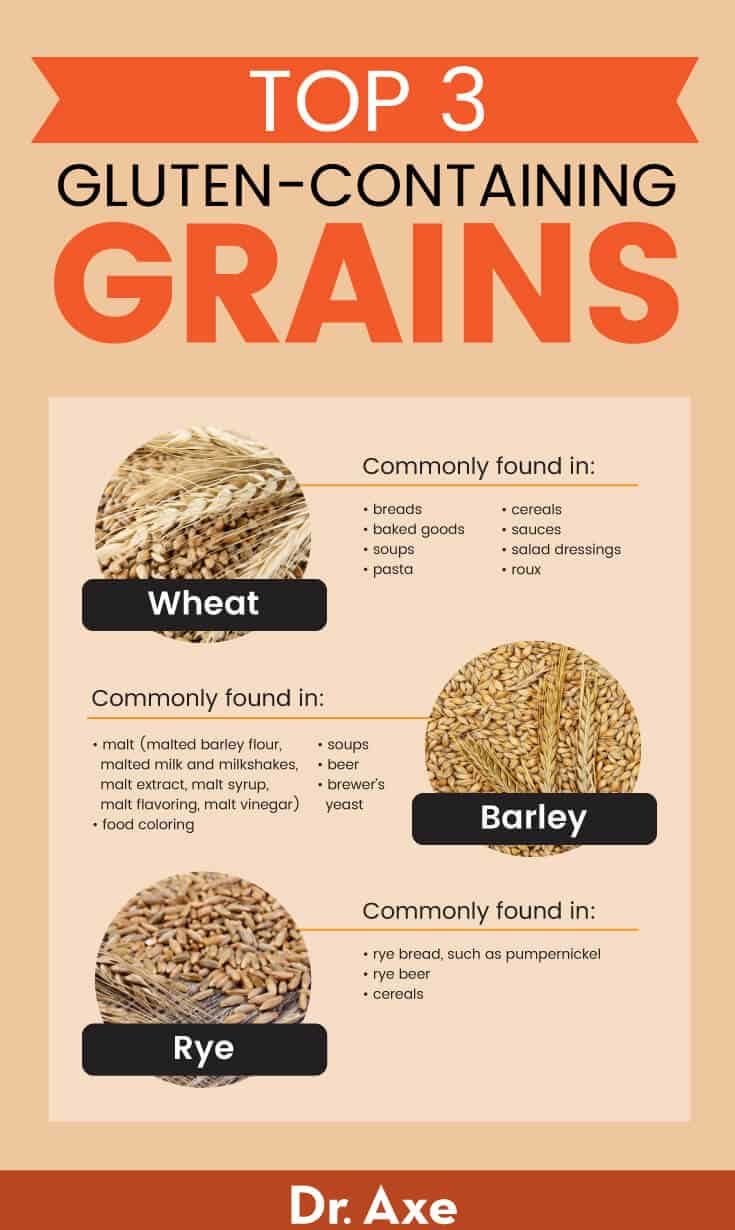
Recipes
Looking for ways to incorporate gluten-free grains into your diet? Here are some ideas:
- Make a blend of gluten-free grains, such as amaranth, buckwheat and brown rice, as a side dish or add to soups.
- Add your favorite gluten-free grain, like quinoa, to soups or sprinkle over salads.
- You can add amaranth or teff to brownies, cakes and cookies for added nutritional benefits and texture.
- Cook extra gluten-free grains to make a hearty breakfast cereal. Just add some banana or fresh fruit, a drizzle of honey, a few nuts, and a sprinkle of cinnamon.
- You can blend them into a great vegan or vegetarian burger with black beans, gluten-free rolled oats, or cooked brown rice, quinoa, amaranth or teff.
Try the following gluten-free grains recipes:
History of Grains
Wheat has an 8,000-year history as a domesticated food and is the major grain consumed by humans. Even with the gluten-free craze, the Food and Agriculture Organization of the United Nations notes that wheat production has been growing by 1 percent annually to keep pace with world population growth.
Modern wheat has been a part of hybridization and a continued chemical process of development in the last century, particularly in the last 50 years. The intention is to increase yields, resist fungal diseases and pest attacks, improve ease of mechanical harvesting, and meet industrial production demands. This is where GMO processes begin to play a role, and it’s thought that these changes have caused a lot of the gluten issues at hand, though more studies are needed.
Historically, einkorn and emmer are ancient grains dating in the late Paleolithic and early Mesolithic Ages (16,000–15,000 BCE) to the mid-Bronze Age, and shortly after, spelt stepped into the picture.
The high gluten content of common wheat, T. aestivum, brought about leavened bread, believed to have occurred in Egypt, during the 17th century BCE. Less affluent Egyptians ate flat bread from barley, and the poor ate sorghum. Rye then became a major bread grain of Slavs, Celts and Teutons since common wheat was too difficult to grow for long periods of time in that area.
I’m sure you’ve heard many talk about the fact that much of the wheat we eat today is not like what our gandparents ate. This makes sense given that 70 percent of all bread eaten in the United States was baked at home in 1910; however, that changed dramatically in 1924 when it dropped 30 percent.
Everyone is familiar with the famous Wonder Bread. In 1927, the Continental Baking Co. first introduced Wonder Bread. Three years later, Wonder Bread presented its sliced version in a protective wrapper to the market and is where that phrase “the best thing since sliced bread” originated since it was a pretty big deal in the 1930s. Wonder Bread was later enriched with vitamins and minerals as part of a government-sponsored experiment in hopes of helping the poor gain more nutrition, but that was a challenge since the bread itself was depleted of much needed nutrients during processing.
More famous products, still available today, include shredded wheat, which entered the food supply in 1889; Triscuits, which were introduced by the National Biscuit Co. in 1902; and Oreo cookies in 1924. Continental Baking introduced Twinkies in 1927. (12)
Risks and Side Effects
It’s important to find out if you have celiac or a sensitivity if you suspect you have problems with gluten. There are tests that your general practitioner or nutritionist can run to ensure you are not gluten-intolerant. Make sure to pay close attention to any allergic reactions that may occur when eating any foods that contain gluten, and know your labels.
As noted above, gluten is found in many foods. It’s not easy to avoid if you aren’t paying attention; however, with practice, it can be avoided given the numerous options available today.
Final Thoughts
- Gluten is not bad for everyone, but most important is to ensure you’re not missing out on important nutrients found in healthy grains. Try to buy freshly prepared, organic options when possible. Eat in small amounts and take note of how you feel. If something doesn’t feel right, going without grains for a few days may help you determine any concerns you may have.
- If you do have gluten sensitivity or celiac, or you just want to go gluten-free, there are ways to avoid it without sacrificing too much. One way to replace wheat and whole grains with gluten-free grains like amaranth, brown rice, buckwheat, polenta, millet, oats, quinoa, sorghum and teff.
- By following a gluten-free diet and eating gluten-free grains, you may be able to reduce digestive issues, boost energy and prevent allergic reactions.





